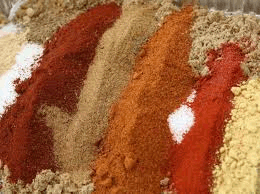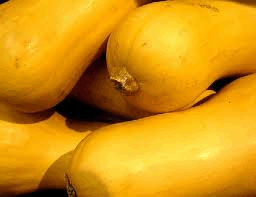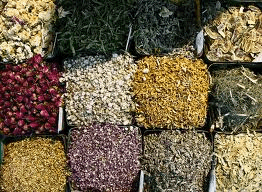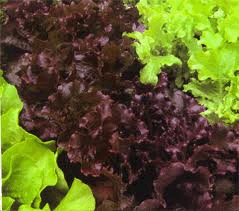Vitamin A
How Vitamin A Benefits Health
?Vitamin A is probably best known for its role in preventing night blindness and other vision problems. What is less known is that it is also important for bone growth, reproduction, and cell division.
It helps the immune system to fight infections by making the white blood cells that destroy viruses and bacteria. It also promotes healthy skin and mucous linings that act as a barrier against the viruses and bacteria.
:: VITAMIN A BENEFITS & FUNCTIONS
Essential for healthy eyes, and prevents night blindness and weak eye sight
Studies indicate a protective effect against common eye disorders such as cataracts
Found to protect against macular degeneration of the eyes that leads to loss of vision in the center of the visual field
Promotes normal working of the reproductive system in both males and females, including during pregnancy and lactation
Important in the development of bones and teeth
Powerful antioxidant that protects body cells and tissues against cancer and cardiovascular disease, by neutralizing the free radical damage that is believed to lead to the diseases; studies have shown that high intake of vitamin A and/or carotenoids may help lower the risk of some cancers
Known to have strong anti-viral activity and to enhance the function of white blood cells and strengthen the immune system against colds, flu, and infections of the kidneys, bladder, lungs and mucous membranes
Promotes healthy surface linings of the eyes and respiratory, urinary, and intestinal tracts, as a protective barrier against viruses and bacteria entering the body and causing infection
Promotes healthy hair and nails
May prevent skin problems like acne, promote healthy wrinkle-free skin, and help remove age spots slows the aging process (anti-aging)
Vitamin A
Vitamin A is an essential vitamin required for vision, gene transcription, boosting immune function, and great skin health. A deficiency in vitamin A can lead to blindness and increased viral infection, however deficiency is only considered a problem in developing countries where it is a leading cause of blindness in children. Over consumption of vitamin A can lead to jaundice, nausea, loss of appetite, irritability, vomiting, and even hair loss. The current recommended daily allowance for Vitamin A is 5000 international units (IU). Below is a list of foods high in Vitamin A.
10 foods high in A:
1. The liver of any animal is packed with vitamins and minerals, and is best prepared steamed or fried with onions and herbs. Turkey liver provides the most vitamin A with 75333IU (1507% RDA) per 100 gram serving, or 62526IU (1250% RDA) per liver. The liver of most any animal will provide 1000%+ RDA of vitamin A. A single tablespoon of pâté will provide 429 IU (9% RDA) of vitamin A.
2. Paprika, Red Pepper, Cayenne, Chili Powder 
A tablespoon of paprika contains 3691IU (74% RDA) for vitamin A, or 52735 IU (1055% RDA) for a 100 gram serving. Other red pepper powders have similar amounts with Cayenne powder providing 41610 IU (832% RDA) per 100g or 2081IU (42% RDA) in a single tablespoon.
3. Sweet Potatoes 
With their bright orange color sweet potatoes are packed with vitamin A. Sweet potatoes provide 19218IU (384% RDA) of vitamin A per 100 gram serving, or 38436IU (769% RDA) in a cup of mashed sweet potato, and 21909IU (438% RDA) in a medium sized sweet potato.
4. Carrots 
Carrots are excellent cooked or as a snack. 100 grams of raw carrots provides 16706IU (334% RDA) for vitamin A. That is 10191IU (204% RDA) for a medium sized carrot, and 2069IU (41% RDA) for a single baby carrot.
5. Dark Leafy Greens
Crisp, fresh, and delicious, dark leafy greens are great in a salad or steamed as a side. As a bonus they are also high in calcium. Kale provides the most vitamin A with 15376IU (308% RDA) per 100g serving, 10302IU (206% RDA) per cup. It is followed by Turnip Greens (232% RDA), Mustard Greens (210% RDA), Dandelion Greens (203% RDA), Spinach (188% RDA), and Collards (133% RDA).
6. Butternut Squash 
Dark orange squash has a delicious nutty and sweet flavor. 100 grams baked provides 11155IU (223% RDA) of vitamin A, or 22868IU (457% RDA) per cup.
7. Dried Herbs 
Dried herbs are so packed with vitamins they appear on practically every HealthAliciousNess Top 10 list. Make it a habit to add a pinch of dried herb to everything you prepare. Dried Parsley provides the most vitamin A with 10184IU (204% RDA) per 100 gram serving, or 204IU (4% RDA) per tablespoon. It is followed by Dried Basil (188% RDA), Dried Marjoram (161% RDA), Dill (154% RDA), and Oregano (138% RDA).
8. Lettuce 
The kind of lettuce matters when it comes to vitamin A content. Dark colorful lettuces provide the most vitamin A with Red and Green Leaf lettuces providing 7492IU (150% RDA) per 100 gram serving, 2098IU (42% RDA) per cup shredded, and 1274IU (25% RDA) per leaf. Iceberg only provides 502IU (10% RDA) per 100g, 361IU (7% RDA) per cup shredded, and 75IU (2% RDA) per leaf.
9. Dried Apricots 
Dried apricots are a great portable snack food. 100 grams will provide 3604IU (72% RDA) of vitamin A, which is 4685IU (94% RDA) per cup, and 144IU (6% RDA) per dried apricot.
10. Cantaloupe 
Cantaloupe and other yellow/orange melons are a great source of vitamin A. Cantaloupe provides 3382IU (68% RDA) of vitamin A per 100 gram serving. That is 5986IU (120% RDA) per cup of mellon balls, or 2334IU (47% RDA) in a medium sized wedge.

